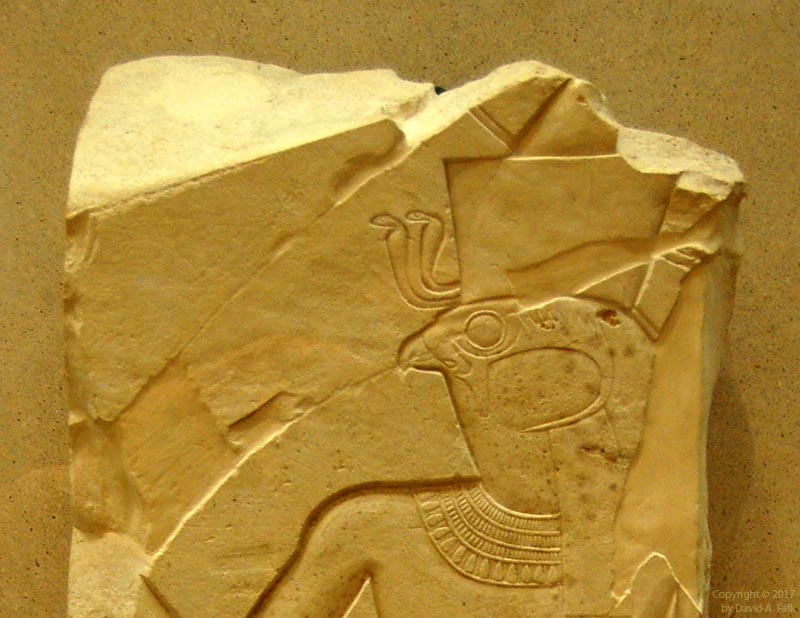The (Sea of) Reeds (pȜ–ṯwfy) comes to papyrus reeds and the (Waters-of)-Horus (pȜ–ḥr) to rushes. Twigs of the orchards and wreaths of the vine-yards [ … ] birds from the Cataract region. It leans upon [ … ] the Sea (pȜ ym) with bg-fish and bȗrἰ-fish, and even their hinterlands provide it. The Great-of-Victories youths are in festive attire every day; sweet moringa-oil is upon their heads having hair freshly braided. They stand beside their doors. Their hands bowed down with foliage and greenery of Pi-Hahirot (pr-ḥwt-ḥrt) and flax of the Waters-of-Horus. The day that one enters (Pi)ramesses (wsr-mȜˁ-rˁ stp-n-rˁ) l.p.h., Montu-of-the-Two-Lands. Papyrus Anastasis III (2:11-3:4)This document, dated to the third year of Ramesses II’s successor, Merneptah (ca. 1222-1212 BCE), locates Pi-Hahiroth on the way from the Sea of Reeds (pȜ ṯwfy) towards Piramesses. It appears as though Pi-Hahiroth was probably on the south coast of the Sea of Reeds in a marshy area on the edge of the desert. While no one knows the exact location of Pi-Hahiroth, it was probably is in close proximity to Migdol and Baal Zephon. Egyptologists have long struggled with the meaning of the pr-ḥwt-ḥrt toponym. And early Egyptologists suggested that it might mean “House of (the goddess) Hathor,” assuming that the word ḥrt was an unusual or mistaken spelling of Hathor. The toponym follows Egyptian convention beginning with the hieroglyphic pr-ḥwt, “estate of the temple” or “house of the precinct.” It ends with the goddess character indicating that the final element, ḥrt, is theophoric. William F. Albright suggested that it might mean “the mouth of the canals,” which he suggested was perhaps a Semitic etymology of the Egyptian Pi-Ḥ-r-t, yet this creative solution ultimately did not solve the problem of the theophoric name. He suggested that Heret was the name of a Semitic goddess. The problem is that, even though the name could mean “Estate of the Temple of (the goddess) Heret,” no such goddess is known. Therefore, Albright’s proposal was not a tenable solution to the problem. I believe that ḥrt is an abbreviated spelling of ḥry(t)-tp, “the one who is on top.” The term ḥry(t)-tp is one of the epithets of the Uraeus serpent goddess, Wadjet, and therefore, the name would mean, “Estate of the goddess who is on top (=Wadjet).” This solution retains the theophoric aspects of the toponym and is consistent with known examples of the Wadjet epithet (e.g. Karnak Rhetorical Stela [KRI V 89.10]).

Pi-Hahiroth, “Estate of the Temple of the Wadjet” by any other name
After Pithom, the Israelites camped before the fortress of Pi-Hahiroth (Exod 14:2). The origin of the name Pi-Hahiroth comes from the Egyptian pr-ḥwt-ḥrt. The toponym pr-ḥwt-ḥrt appears in one extra-biblical text, Papyrus Anastasis III: